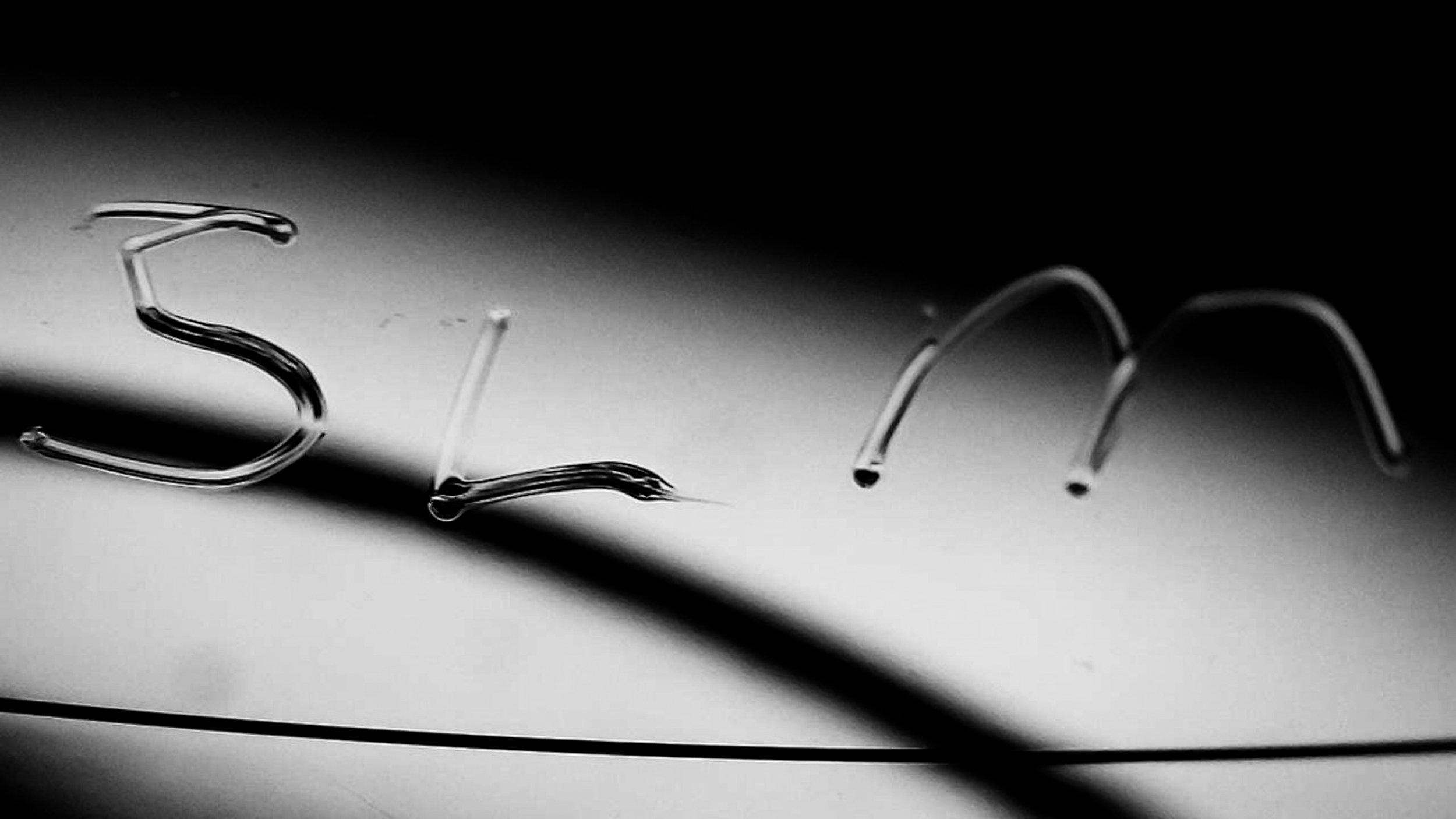THE CONTEMPORARY BASICS
runouts & deadwax
(this page collects abridged versions of Reading Runouts Part I and Part II)
2) lead-out style: eccentric vs. concentric
Cutting location:
Eccentric vs. Concentric Lead-out
Mono LP with eccentric lead-out = cut @ Capitol Studios (≤ 1958)
Mono LP with concentric lead-out = cut @ Contemporary, 8481 Melrose Pl. (1958-1980)
Contemporary did not start cutting stereo LPs until opening its cutting room in 1958. Meaning Capitol never cut any stereo LPs for them. All Contemporary stereo cuts feature concentric lead-outs.

C3525 side 2/D7 (Capitol cut)

C3525 side 2/D10 (8481 Melrose cut)
3) plating stamp styles
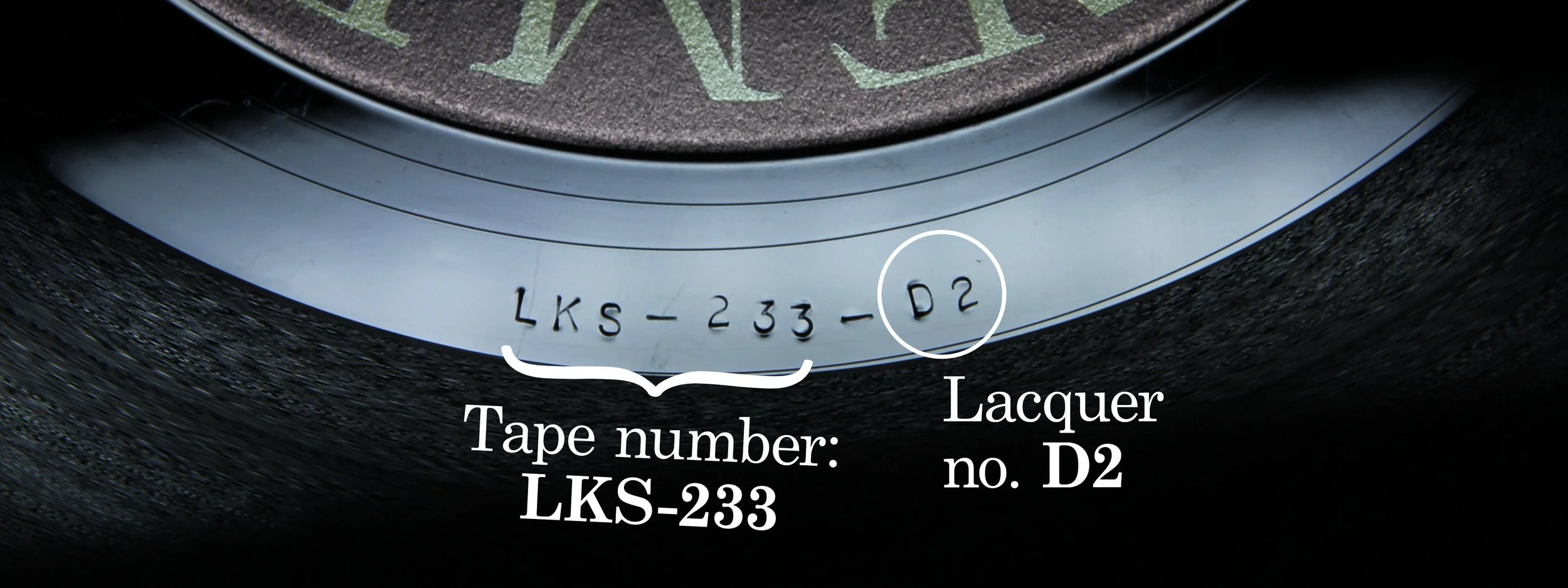

RCA "1950s small" stamps Stamped into lacquers during plating 1954 to 1960
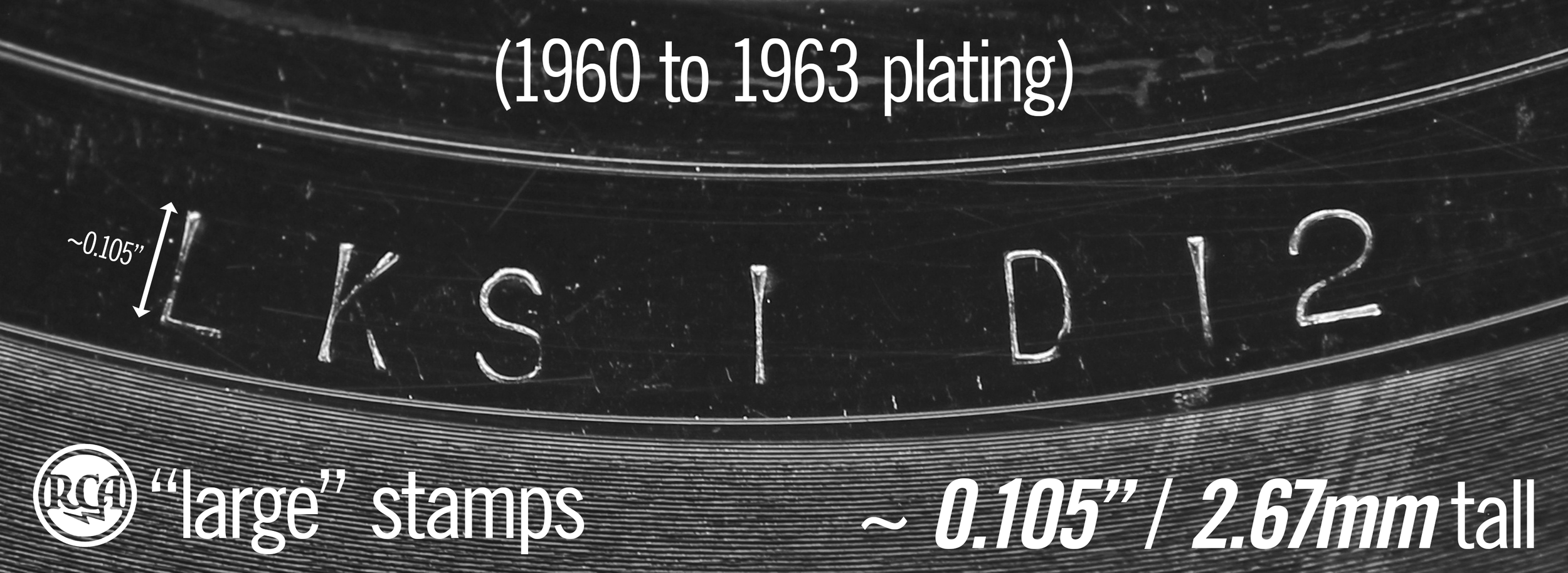
RCA "large" stamps Stamped into lacquers during plating 1960 to 1963
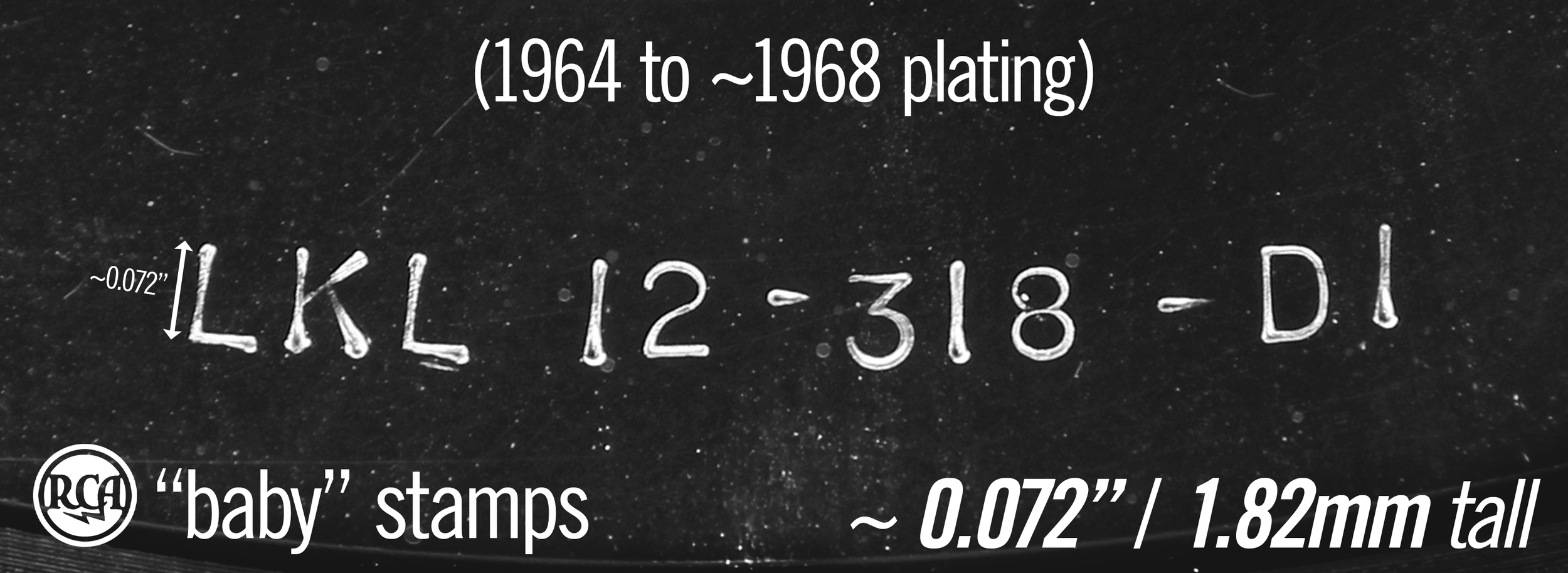
RCA "baby" stamps Stamped into SOME lacquers during plating 1964 to 1968ish

RCA "new small" stamps Stamped into MOST lacquers during plating 1964 to 1973

Contemporary 1975-78 stamps Stamped into MOST lacquers during cutting 1975 to 1978 (some later lacquers as well)




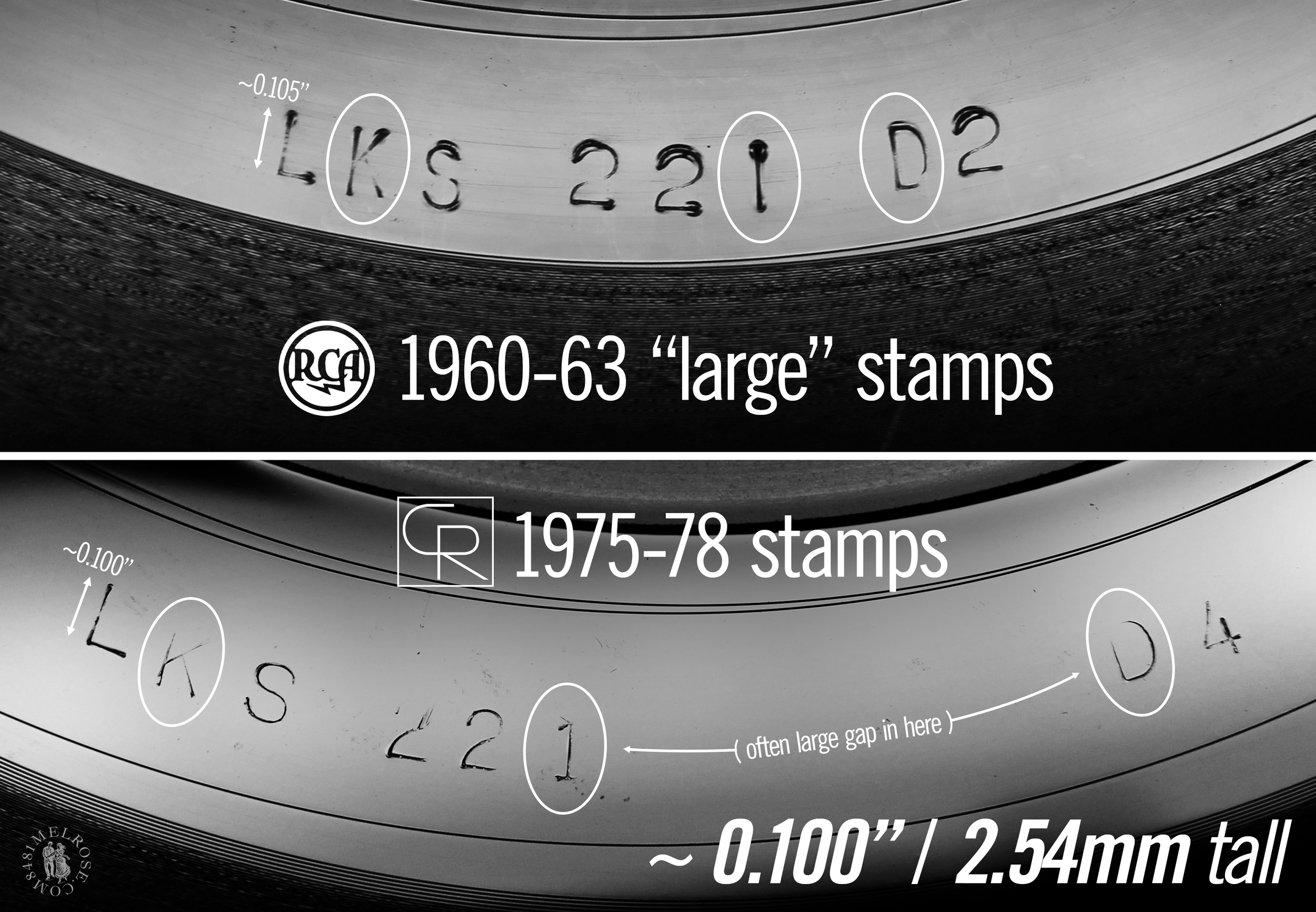
STEREO stamps
In the first several years of the stereo era, Contemporary lacquers had STEREO denoted in the runouts alongside the LKS lacquer identifiers. This first appeared as separate characters S T E R E O in the same stamp style as the rest of the string, then as a different STEREO stamp separate and distinct from the regular identifiers:
S T E R E O Separated stamps (1958-1959)
STEREO Unified stamp (1959-1961)
3) additional plating marks
the RCA Hollywood ‘H’ stamp
Indicates plating by RCA’s plating/pressing plant in Hollywood, which Contemporary worked with from 1954 to 1973.
It was generally stamped during initial electroplating of lacquers, but there are examples where it was later stamped into metal. It appeared in various positions depending on timeframe, and does not seem to have been applied at all from 1959 to 1961.



The MR stamp & other indicators
In addition to their job codes, Monarch’s custom stamp graces most of the metal they touched. Though not as minimal as RCA’s H, the Monarch stamp shows more modern flair, stylizing the MR characters inside a tiny circle.
This MR reads left-to-right if the stamp was pressed into a lacquer or mother, and it’s not uncommon to find it mirrored backwards— a likely indication it was punched into a stamper or master.
the crossed-out H
On every Monarch re-use of RCA metal, the original Hollywood “H” is crossed out, and kind of violently. I’m curious if RCA did this themselves to the entire batch of metal before handing over custody, because some foreign 1960s pressings show a similarly hand-cancelled H.
Typical cancellation on Monarch replate.
Another Monarch.
1960s Dutch repress.
The Santa Maria S and indicators
CBS-processed Contempoary lacquers can be identified by their tracking identifiers in the runouts. The most noticeable being the informal ‘S’ etched just clockwise of the lacquer string, sometimes with a number 1 or 2 next to it. Notice, in the two examples below, that the S is constant and the number changes. A mother indicator, perhaps?

1 S LKS 104 D4

S 2 inscription LKS 104 D4 (equivalent metal)
The SLM stamp/etch
Contemporary worked with plating firm Sheffield Lab Matrix from 1979 to 1984. Any lacquer plated by SLM was stamped or etched with their initials, as below:
4) etched number codes
Monarch Delta codes (Δ1xxxx, Δ1xxxx-X)
Monarch ran on job codes, and job codes are beautiful things. These were intended to keep track of metal parts in the factory and would be inscribed directly into the runouts. Any part could, I suppose, be identified by reading its code and looking it up in the company records. It’s a simple but effective system suited to the work.
These codes were assigned sequentially. By the time Contemporary moved to Monarch, the plant had eclipsed 17000. Like many plants in this era and beyond, these codes used a delta character as signifier:

LKS.99.D3 (S7551, side 1) Something Else!!!!

LKS 100 D3 (S7551, side 2) Something Else!!!!

LKS.59.D2 (S7555, side 1) Jazz Giant

LKS.60.D2 (S7555, side 2) Jazz Giant

SLM Delta codes
(Δx, Δxx, Δxxx, Δxxxx; also -X)
Like Monarch, SLM used delta job codes to track its operations. Of note, maybe, is that SLM head Richard Doss had previously worked at Monarch.
Some of the very first SLM jobs were new titles for Contemporary. The relationship persisted until the Fantasy sale in 1984; the Delta codes for Contemporary jobs spanned from the single digits up to the 5000s.
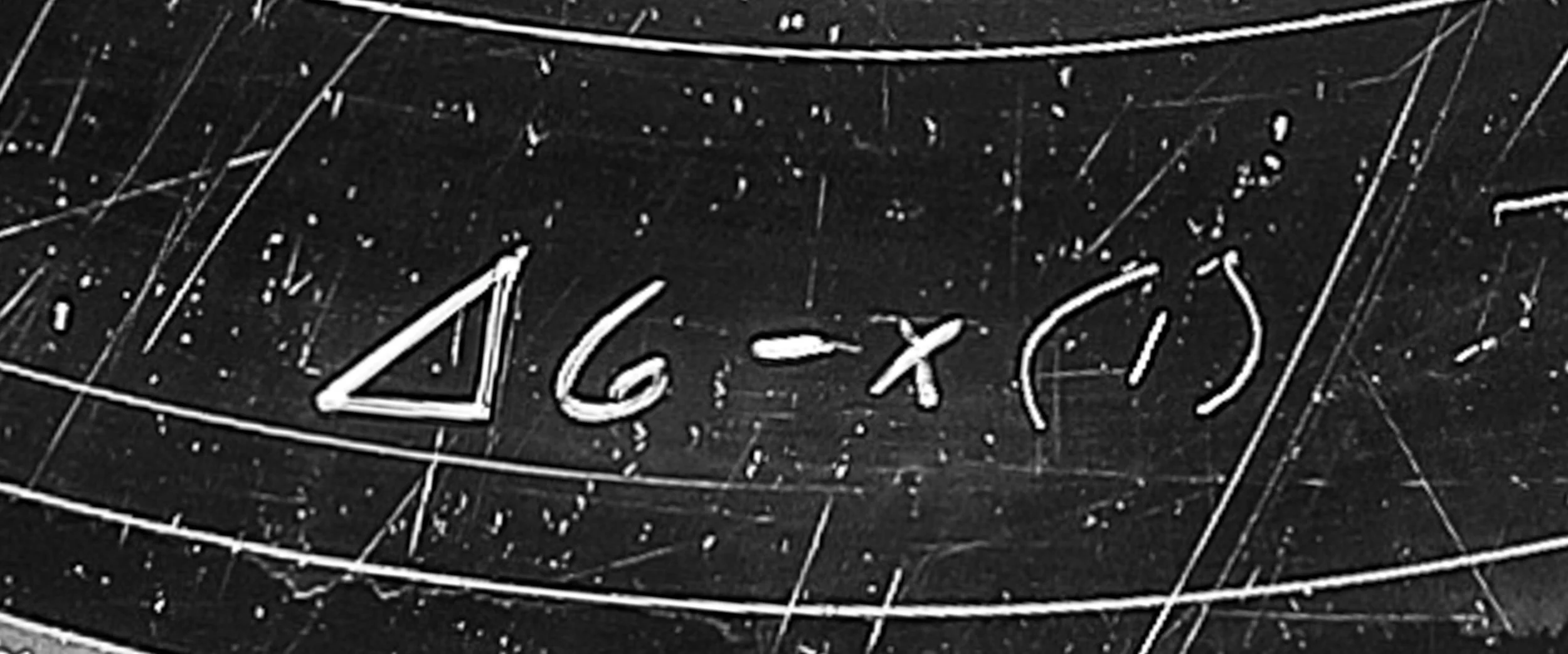




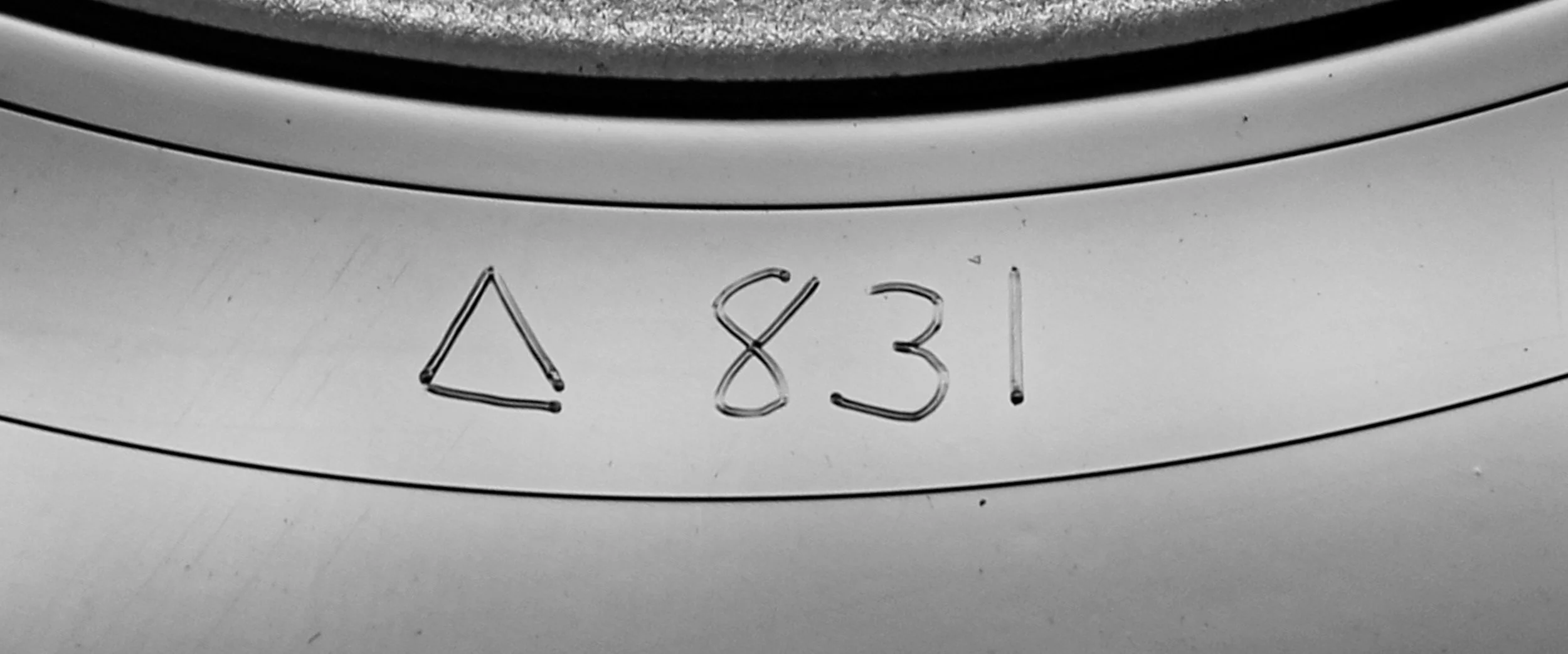

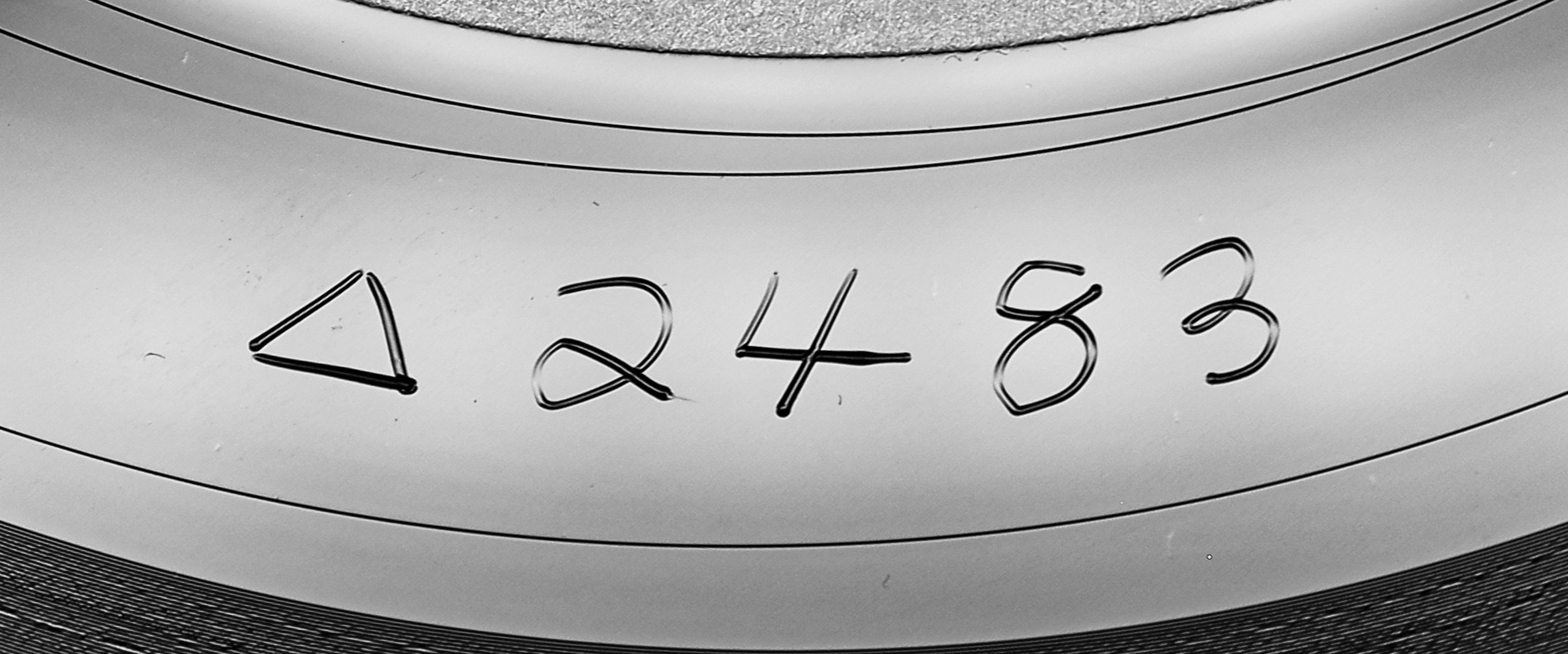
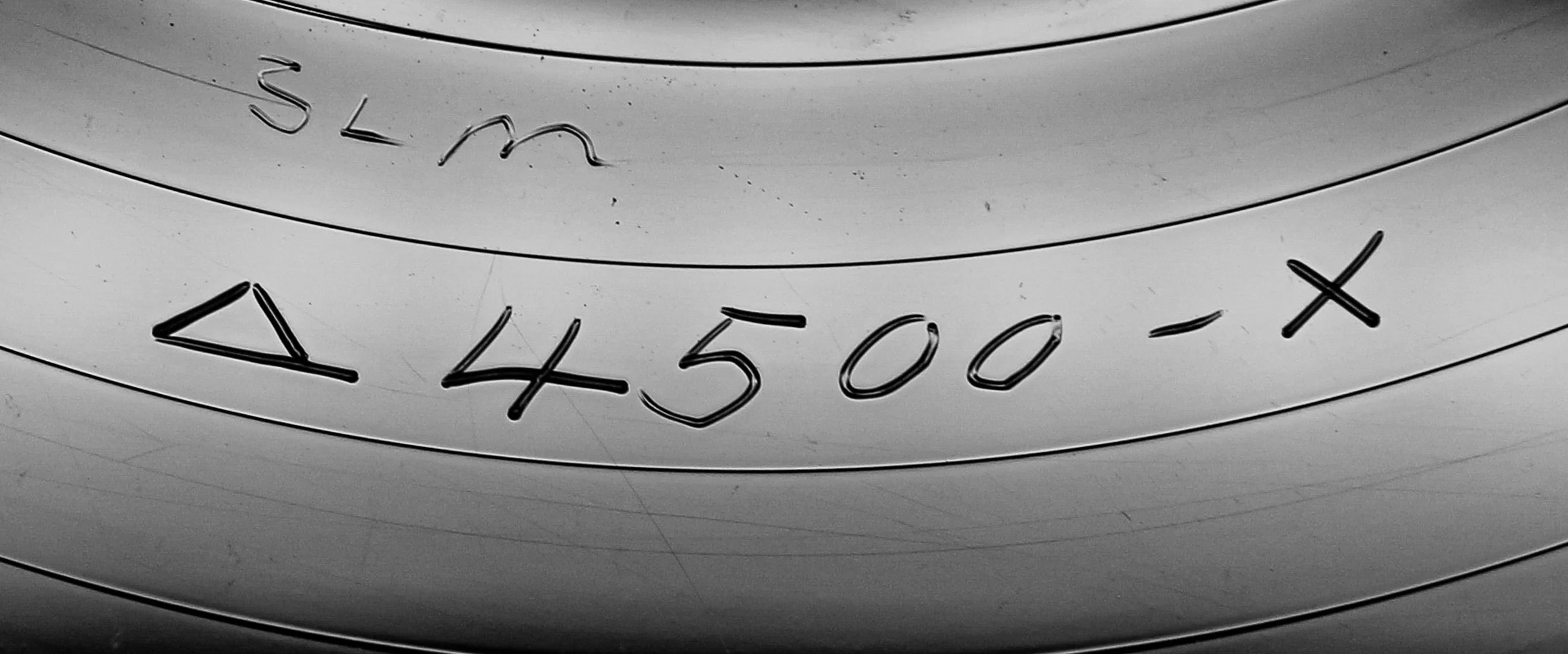
Wakefield job codes (xxxxx-A / -B)
Wakefield didn’t process lacquers for Contemporary, but certainly did replating work on metal sourced from SLM or CBS. We can see their hand in the job codes added to the runouts.
Contemporary’s Wakefield jobs are in the 39000-42000 range and span from 1981 to 1983.
S7543 Pal Joey SLM Δ933 (late 1981 cuts)
S7555 Jazz Giant SLM Δ90 (1979-80 cuts)
S7548 Gigi SLM Δ1971 (1982 cuts)
S7574 Carl's Blues SLM Δ4500 (1983 cuts)






































